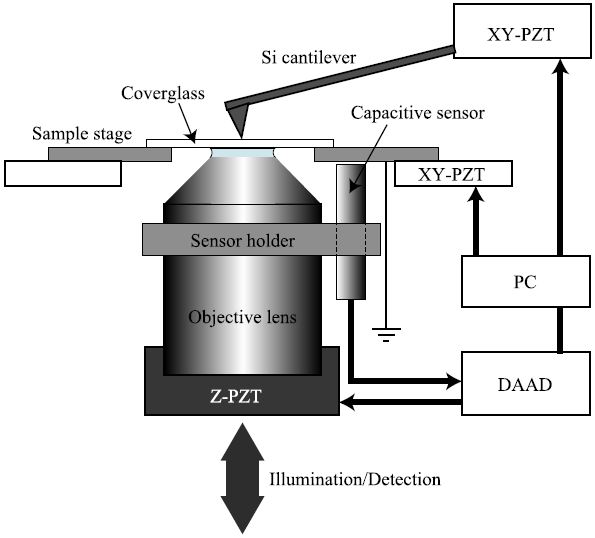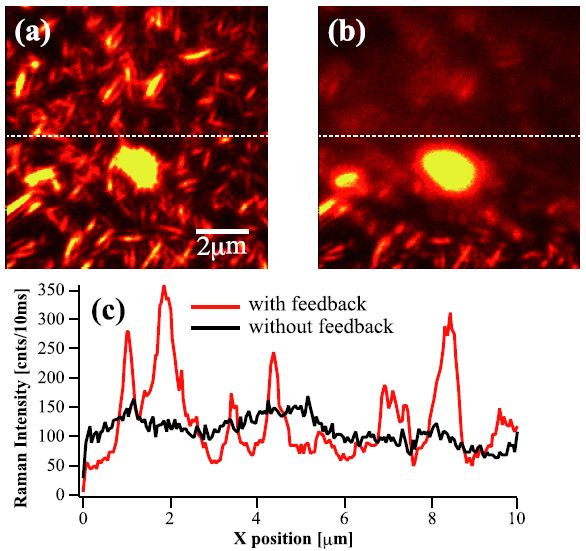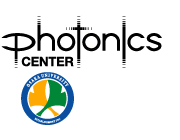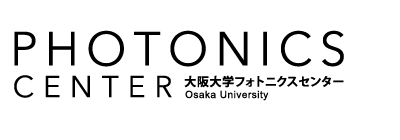研究成果39
Nanometric locking of the tight focus for optical microscopy and tip-enhanced microscopy
N. Hayazawa, K. Furusawa and S. Kawata
Nanotechnology 23 (2012)465203

Schematic of the focus locking system consisting of an objective lens, a sample stage and capacitive sensor. The capacitive sensor senses the gap between the sensor electrode and the counter electrode (sample stage). An AFM head employing a cantilever is used for tip-enhanced spectroscopy, in which the tip has to be kept within the tight focus for a long time. PC: personal computer, DAAD: digital–analog and analog–digital converter.

Confocal micro-Raman images of semiconductive SWNTs (a) with and (b) without a feedback. The cross-sectional profiles at the dashed lines are plotted in (c). The excitation laser wavelength and the power at the tight focus are 532 nm and 500 uW, respectively. Each pixel consists of 50 nm in size and 10 ms in exposure time.
diffraction limit is also plotted. The tip is adjusted to the peak position of the longitudinal field for the best tip-enhancement effect.
We have successfully stabilized the tight focus onto the sample surface of an optical microscope within +/-1.0 nm for a virtually unlimited time duration. The time-dependent thermal drift of the tight focus and the mechanical tilt of the sample surface were simultaneously sensed by a non-optical means based on a capacitive sensor and were compensated for in real-time. This non-optical scheme is promising for the suppression of background light sources for optical microscopy. The focus stabilization is crucial for microscopic measurement at an interface, particularly when scanning a large surface area, because there is always a certain amount of mechanical tilt of the sample substrate, which degrades the contrast of the image. When imaging nanoscopic materials such as carbon nanotubes or silicon nanowires, more stringent nanometric stabilization of the focus position relative to such samples is required, otherwise it is often difficult to interpret the results from the observations. Moreover, the smaller the sample volume is, the smaller the signal becomes, resulting in a long exposure time at each position. In this sense, long-term stability of the tight focus is essential for both microscopic large area scanning and nanosized sample scanning (high-resolution/large-area imaging). In addition, the recently developed tip-enhanced microscopy requires long-term stability of the relative position of the tip, sample and focus position. We were able to successfully demonstrate a stability improvement for tip-enhanced microscopy in the same manner. The stabilization of the tight focus enables us to perform long-term and robust measurements without any degradation of optical signal, resulting in the capability of true nanometric optical imaging with good reproducibility and high precision. The technique presented is a simple add-on for any kind of optical microscope.





